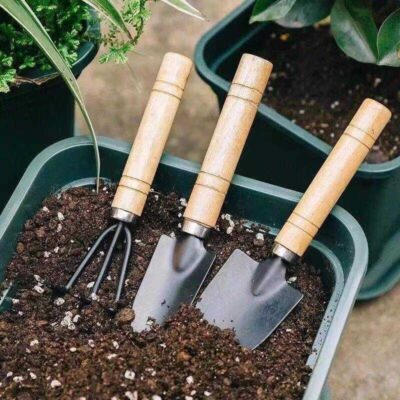When designing or sourcing shovels for professional landscaping applications, the challenge is not just price or MOQ — it’s engineering clarity. A well-written specification helps avoid performance issues in the field, ensures consistent quality across batches, and reduces warranty claims for distributors or contractors.
1. Define the Application
Different landscaping tasks require distinct shovel geometries.
Digging shovels (square or round-point) are ideal for soil penetration.
Transfer shovels feature flatter blades for moving loose materials like sand or mulch.
Trenching shovels with narrow, curved heads are used for irrigation or wiring work.
Before ordering, clarify the soil type, frequency of use, and user profile (professional vs. home gardener). These parameters determine both blade angle and steel hardness requirements.
2. Blade Material and Thickness
A shovel blade is typically stamped or forged from medium-carbon steel (AISI 1045) or boron steel.
Forged blades deliver superior strength for heavy-duty applications.
Stamped blades are lightweight and cost-effective for retail sets.
If your business is scaling up to bulk orders, benchmark suppliers from Garden Shovel Manufacturers who can disclose full material composition and hardness test reports. This ensures the metal is both strong and flexible — critical for long-term performance.
3. Handle Material and Ergonomics
The handle accounts for nearly 40% of user comfort and fatigue.
Wooden handles (ash, hickory) provide natural shock absorption but require drying and sealing.
Fiberglass handles are durable, waterproof, and ideal for public landscaping contracts.
Steel or composite handles maximize strength but can be heavier.
Ergonomic design also includes D-grip handles for better control and anti-slip textures that maintain safety under wet or muddy conditions.
4. Surface Coating and Anti-Rust Protection
Coating technology directly influences maintenance cycles. Powder coating or e-coating can extend service life by 3–5 years compared to uncoated steel. For outdoor projects or coastal regions, always specify double-layer corrosion protection (e.g., zinc plating + powder coat).
To meet durability expectations, reliable Garden Tool Manufacturers often combine electrophoretic coating with post-bake curing, ensuring uniform adhesion across irregular edges.
5. Joint Construction and Testing
The junction between blade and handle is a critical failure point. Look for the following manufacturing methods:
Socket-and-rivet joints for heavy-duty industrial use.
Tubular steel welds for high torque applications.
Heat-shrink bonding in composite designs for lighter models.
During OEM development, request torsion and bending tests to verify handle integrity. A torque failure limit of at least 120 Nm is standard for professional-grade tools.
6. Dimensional Consistency and Packaging
Bulk OEM orders often face dimensional variance issues during forming and painting. A deviation of more than ±2 mm in blade curvature can affect digging efficiency. Request dimensional tolerance drawings during DFM (Design for Manufacturability) review.
For retail or B2B packaging:
Bulk pallets save logistics costs.
Hang-tag retail sets boost visibility for distributors.
Custom cartons can include QR codes linking to maintenance videos or your brand catalog.
7. Branding and Private Labeling
In today’s competitive market, shovel branding is not just about logos — it’s about differentiation in functionality and color. Powder-coated blades can be customized to your corporate palette (e.g., matte black for premium, red for standard).
Laser engraving on steel or pad printing on handles allows your brand to stand out. Ensure ink or coating materials comply with RoHS and REACH standards if targeting the EU market.
8. Quality Control Before Mass Production
Your pre-production checklist should include:
Drop test: verifies weld and socket strength.
Salt spray test: evaluates corrosion resistance.
Hardness and elasticity test: ensures blades bend, not break, under stress.
Visual inspection: checks coating uniformity and logo application.
A professional OEM supplier will issue inspection reports for every batch, keeping documentation transparent and traceable.
9. MOQ and Lead Time
For new tooling, MOQ typically starts from 500–1,000 units per SKU. Standard lead time is 30–45 days after final sample approval. However, suppliers with in-house mold shops can compress development time by up to 20%.
10. Final Recommendations
When selecting your OEM shovel supplier, prioritize factories that integrate metal stamping, handle production, and coating under one roof. This guarantees better process control and faster turnaround.
Collaborating with an experienced garden tool manufacturer not only ensures quality but also helps your brand scale quickly through consistent performance and strong after-sales reliability.

























